The DASH diet is a healthy eating plan that has been shown to help lower blood pressure, reduce the risk of heart disease, stroke, and certain types of cancer, and improve overall health. The acronym “DASH” stands for Dietary Approaches to Stop Hypertension, and the diet is designed to help prevent or treat high blood pressure. The DASH diet emphasizes whole grains, fruits, vegetables, low-fat dairy products, lean protein sources, and healthy fats, while limiting sodium, saturated fat, and added sugars.
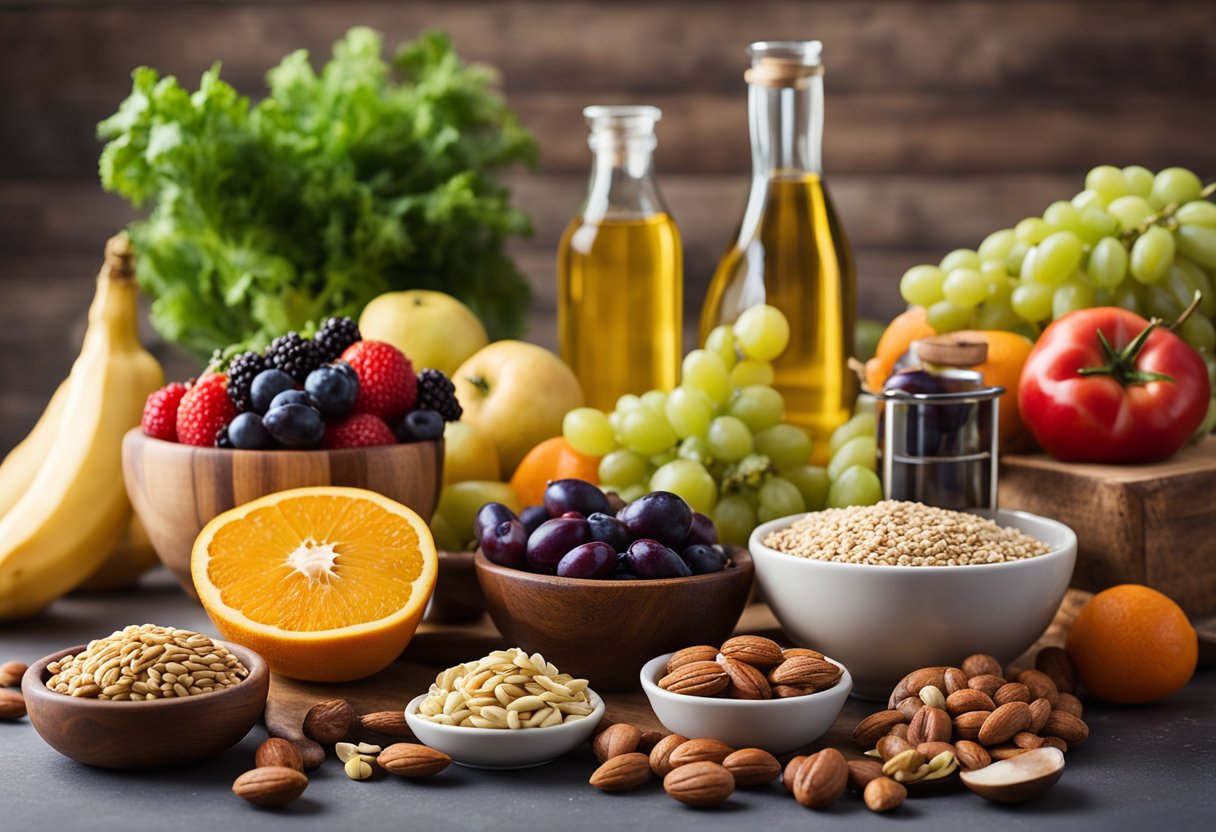
The DASH diet was developed by the National Heart, Lung, and Blood Institute (NHLBI) in response to the need for an effective, evidence-based dietary approach to lower blood pressure. The diet is based on research that has shown that certain dietary patterns can help lower blood pressure, and that a diet rich in fruits, vegetables, whole grains, and low-fat dairy products, and low in saturated and trans fats, can help reduce the risk of heart disease. The DASH diet has been shown to be effective in lowering blood pressure, reducing the risk of heart disease and stroke, and improving overall health.
Key Takeaways
-
- The DASH diet is a healthy eating plan that can help lower blood pressure, reduce the risk of heart disease, stroke, and certain types of cancer, and improve overall health.
-
- The diet emphasizes whole grains, fruits, vegetables, low-fat dairy products, lean protein sources, and healthy fats, while limiting sodium, saturated fat, and added sugars.
-
- The DASH diet was developed by the National Heart, Lung, and Blood Institute (NHLBI) in response to the need for an effective, evidence-based dietary approach to lower blood pressure, and has been shown to be effective in improving health outcomes.
What Is the DASH Diet?
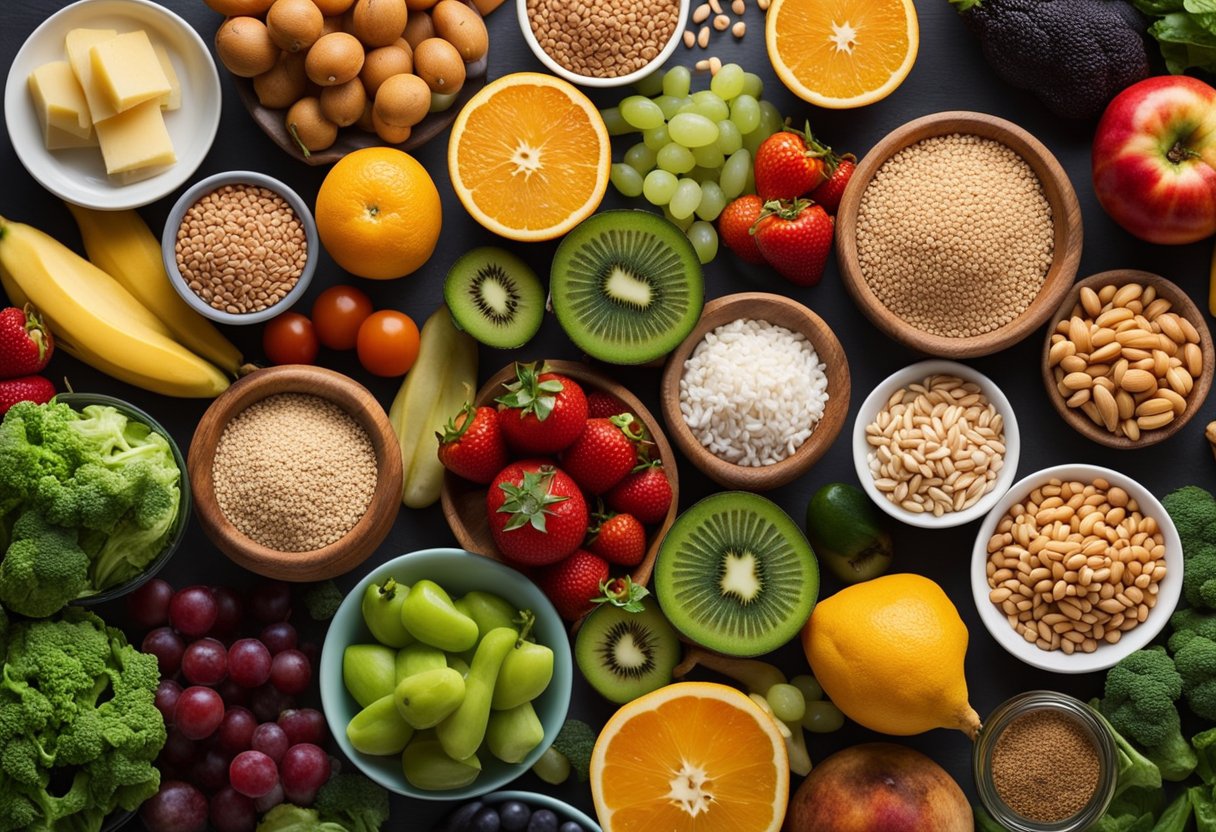
The DASH (Dietary Approaches to Stop Hypertension) diet is a healthy eating plan that is designed to help prevent or treat high blood pressure, also known as hypertension. The DASH diet emphasizes the consumption of fruits, vegetables, whole grains, lean proteins, and low-fat dairy products. It is a balanced and flexible eating plan that is rich in nutrients and low in saturated and trans fats.
The DASH diet was developed by the National Heart, Lung, and Blood Institute (NHLBI) to help people reduce their blood pressure and lower their risk of heart disease, stroke, and other health problems. The diet is based on scientific research that has shown that certain nutrients, such as potassium, calcium, and magnesium, can help lower blood pressure.
The DASH diet is also beneficial for people who want to maintain a healthy weight, reduce their risk of diabetes, and lower their cholesterol levels. The diet is easy to follow and does not require any special foods or supplements. It emphasizes the consumption of whole foods and discourages the consumption of processed and high-sugar foods.
In summary, the DASH diet is a healthy eating plan that emphasizes the consumption of fruits, vegetables, whole grains, lean proteins, and low-fat dairy products. It is designed to help prevent or treat high blood pressure, as well as reduce the risk of heart disease, stroke, and other health problems. The diet is based on scientific research and is easy to follow, making it a great option for anyone looking to improve their health through their diet.
Benefits of the DASH Diet
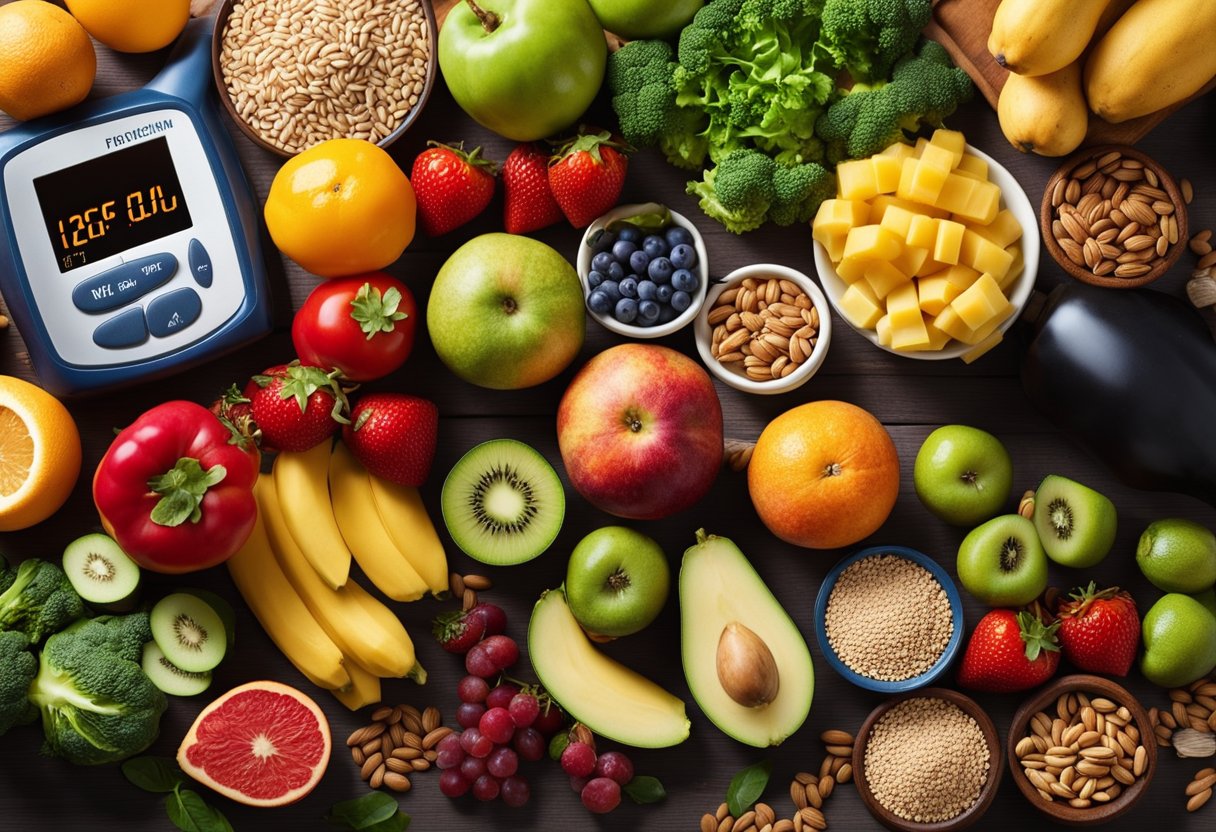
The DASH (Dietary Approaches to Stop Hypertension) diet is a healthy eating plan that is designed to manage high blood pressure. The diet emphasizes the consumption of fruits, vegetables, whole grains, lean proteins, and low-fat dairy products while limiting the intake of sodium, saturated fats, and added sugars.
Blood Pressure Management
The primary benefit of the DASH diet is its ability to manage high blood pressure. According to the Mayo Clinic, the DASH diet can help reduce systolic blood pressure by up to 11 mm Hg and diastolic blood pressure by up to 6 mm Hg [1]. This reduction in blood pressure can help reduce the risk of heart disease, stroke, and other health problems.
Heart Health Improvement
The DASH diet is also beneficial for improving heart health. The diet’s emphasis on fruits, vegetables, whole grains, and lean proteins can help reduce the risk of heart disease by lowering cholesterol levels and reducing inflammation [2]. Additionally, the DASH diet can help reduce the risk of heart failure [3].
Aid in Weight Loss
The DASH diet can also aid in weight loss. The diet’s emphasis on whole foods and limiting added sugars and saturated fats can help individuals lose weight and maintain a healthy weight [4]. Additionally, the DASH diet can help reduce belly fat, which is associated with an increased risk of heart disease and type 2 diabetes [5].
Diabetes Management
The DASH diet can be beneficial for individuals with type 2 diabetes. The diet’s emphasis on whole foods, lean proteins, and low-fat dairy products can help manage blood sugar levels and reduce the risk of complications associated with diabetes [6]. Additionally, the DASH diet can help reduce the risk of developing type 2 diabetes in individuals who are at risk [7].
In summary, the DASH diet is a healthy eating plan that can provide numerous benefits, including the management of high blood pressure, improved heart health, aid in weight loss, and diabetes management. By following the DASH diet, individuals can improve their overall health and reduce the risk of developing chronic health conditions.
References:
[1] Mayo Clinic. DASH diet: Healthy eating to lower your blood pressure. https://www.mayoclinic.org/healthy-lifestyle/nutrition-and-healthy-eating/in-depth/dash-diet/art-20048456
[2] Harvard Health Publishing. The DASH diet: A complete overview and meal plan. https://www.healthline.com/nutrition/dash-diet
[3] American Heart Association. DASH diet. https://www.heart.org/en/healthy-living/healthy-eating/eat-smart/nutrition-basics/dash-diet
[4] US News & World Report. Best diets overall. https://health.usnews.com/best-diet/best-diets-overall
[5] Harvard Health Publishing. Abdominal fat and what to do about it. https://www.health.harvard.edu/staying-healthy/abdominal-fat-and-what-to-do-about-it
[6] American Diabetes Association. The DASH diet. https://www.diabetes.org/nutrition/healthy-food-choices-made-easy/the-dash-diet
[7] National Heart, Lung, and Blood Institute. Your guide to lowering your blood pressure with DASH. https://www.nhlbi.nih.gov/files/docs/public/heart/hbp_low.pdf
DASH Diet Food Groups
The DASH diet emphasizes a variety of nutrient-dense foods, including vegetables, fruits, whole grains, lean proteins, low-fat dairy, nuts, seeds, legumes, and healthy fats. It is a balanced eating plan that focuses on portion sizes and moderation. Here are the six food groups included in the DASH diet:
Vegetables and Fruits
Vegetables and fruits are the foundation of the DASH diet. They are packed with vitamins, minerals, fiber, and antioxidants. The diet recommends 4-5 servings of vegetables and 4-5 servings of fruits per day. Examples of vegetables include leafy greens, broccoli, carrots, tomatoes, and sweet potatoes. Examples of fruits include berries, apples, oranges, and bananas.
Whole Grains
Whole grains are an important source of fiber, vitamins, and minerals. The DASH diet recommends 6-8 servings of whole grains per day. Examples of whole grains include brown rice, quinoa, whole wheat bread, and oatmeal.
Lean Proteins
Lean proteins are an important source of nutrition, but they should be consumed in moderation. The DASH diet recommends 6 or fewer servings of lean protein per day. Examples of lean proteins include chicken, fish, turkey, tofu, and legumes.
Low-Fat Dairy
Low-fat dairy products are a good source of calcium, vitamin D, and protein. The DASH diet recommends 2-3 servings of low-fat dairy per day. Examples of low-fat dairy products include skim milk, low-fat yogurt, and reduced-fat cheese.
Nuts, Seeds, and Legumes
Nuts, seeds, and legumes are a good source of protein, fiber, and healthy fats. The DASH diet recommends 4-5 servings of nuts, seeds, and legumes per week. Examples of nuts and seeds include almonds, walnuts, sunflower seeds, and chia seeds. Examples of legumes include lentils, chickpeas, and black beans.
Fats and Oils
Fats and oils should be consumed in moderation. The DASH diet recommends 2-3 servings of healthy fats per day. Examples of healthy fats include olive oil, avocado, nuts, and seeds. Saturated fat should be limited to less than 6% of total daily calories.
Overall, the DASH diet is a healthy and balanced eating plan that emphasizes whole foods and moderation. By following the diet, individuals can improve their overall health and reduce their risk of chronic diseases.
Nutrient Targets and Servings
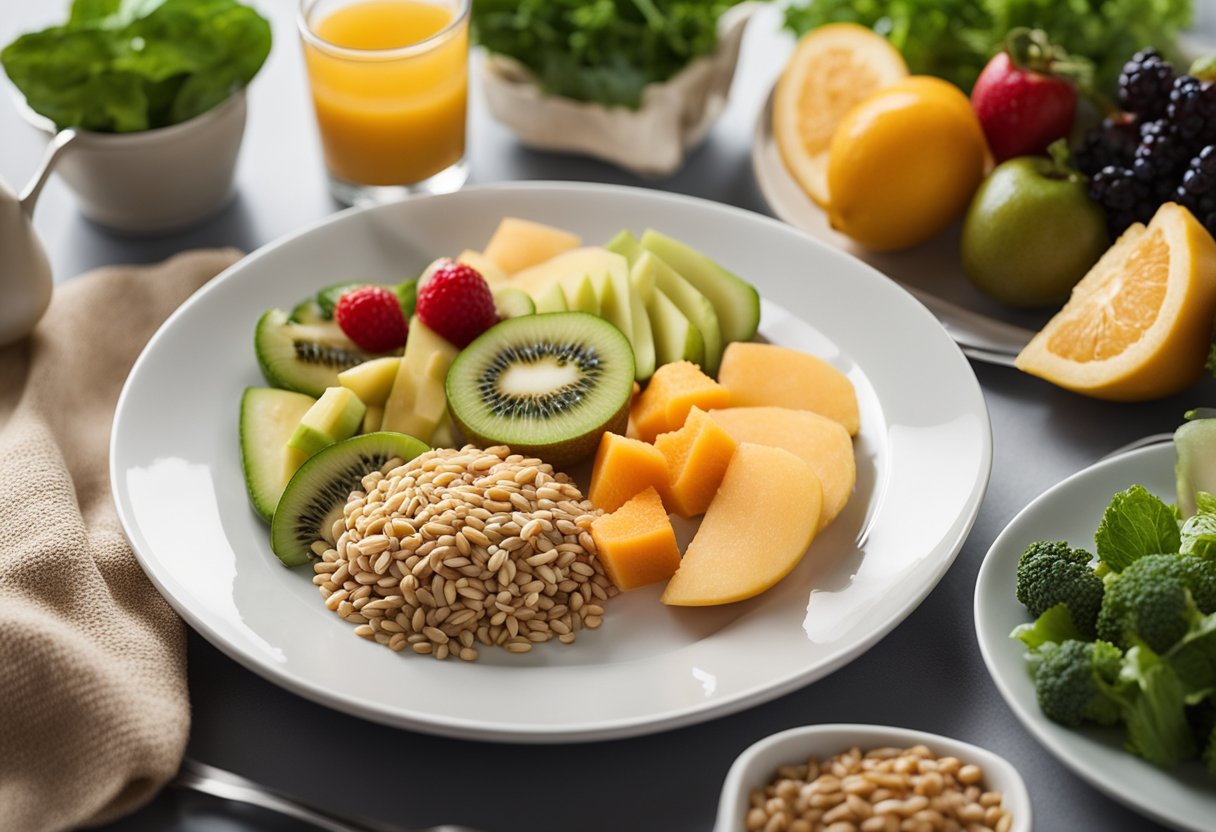
The DASH diet emphasizes consuming a variety of nutrient-dense foods that provide essential vitamins and minerals. The diet focuses on whole foods such as fruits, vegetables, whole grains, lean protein, and low-fat dairy products.
Sodium Reduction
The DASH diet is designed to reduce sodium intake, which is linked to high blood pressure. The recommended sodium intake for the DASH diet is 2,300 milligrams per day or less. However, the ideal intake is 1,500 milligrams or less per day for some people, including those with high blood pressure, African Americans, and middle-aged and older adults.
Potassium, Calcium, and Magnesium
The DASH diet is also high in potassium, calcium, and magnesium, which are essential minerals for maintaining healthy blood pressure levels. Potassium-rich foods include bananas, oranges, potatoes, spinach, and tomatoes. Calcium-rich foods include low-fat dairy products, such as milk, yogurt, and cheese. Magnesium-rich foods include whole grains, nuts, and green leafy vegetables.
Fiber and Protein
The DASH diet is also high in fiber and protein, which are important for maintaining a healthy weight and reducing the risk of chronic diseases. The recommended daily fiber intake for the DASH diet is 25 grams or more for women and 38 grams or more for men. Good sources of fiber include fruits, vegetables, whole grains, and legumes. The recommended daily protein intake for the DASH diet is 46 grams for women and 56 grams for men. Good sources of protein include lean meat, poultry, fish, beans, nuts, and seeds.
Servings
The DASH diet recommends specific servings of different food groups based on daily calorie needs. For example, a 2,000-calorie diet may include 6-8 servings of grains, 4-5 servings of vegetables, 4-5 servings of fruits, 2-3 servings of low-fat dairy, 6 or fewer servings of lean protein, and 2-3 servings of healthy fats and oils.
Sodium Intake
Reducing sodium intake is a key component of the DASH diet. To achieve this, the diet emphasizes consuming whole foods that are naturally low in sodium and avoiding processed foods that are high in sodium. This can help reduce the risk of high blood pressure and other health problems associated with excessive sodium intake.
Creating a DASH Meal Plan

The DASH diet is a healthy eating plan that is designed to help reduce blood pressure and promote overall health. It emphasizes eating fruits, vegetables, whole grains, lean proteins, and low-fat dairy products while limiting high-fat, high-sugar, and high-sodium foods. Creating a DASH meal plan can be a great way to ensure that you are getting the right balance of nutrients while following this diet. Here are some tips and ideas to help you get started.
Daily Servings Guide
The DASH diet is based on a daily calorie intake of 2,000 to 2,500 calories, depending on age, gender, and activity level. The plan recommends the following daily servings:
-
- Vegetables (4-5 servings)
-
- Fruits (4-5 servings)
-
- Grains (6-8 servings)
-
- Dairy products (2-3 servings)
-
- Meat, fish, poultry (6 or fewer servings)
-
- Nuts, seeds, and legumes (4-5 servings per week)
Sample Meal Ideas
Here are some sample meal ideas to help you get started with your DASH meal plan:
-
- Breakfast: Oatmeal with berries and low-fat milk, whole-grain toast with almond butter, and a banana.
-
- Lunch: Grilled chicken breast on a bed of mixed greens with cherry tomatoes, cucumbers, and a low-fat vinaigrette, a slice of whole-grain bread, and an apple.
-
- Dinner: Baked salmon with roasted asparagus and brown rice, a side salad with mixed greens, carrots, and a low-fat dressing, and a glass of low-fat milk.
Snack Options
Snacking can be a healthy part of a DASH meal plan, as long as you choose the right foods. Here are some snack options to consider:
-
- Apple slices with almond butter
-
- Baby carrots with hummus
-
- Greek yogurt with mixed berries
-
- A handful of almonds or walnuts
-
- Whole-grain crackers with low-fat cheese
By following the daily servings guide, incorporating sample meal ideas, and choosing healthy snack options, you can create a DASH meal plan that is both nutritious and delicious.
Lifestyle Considerations
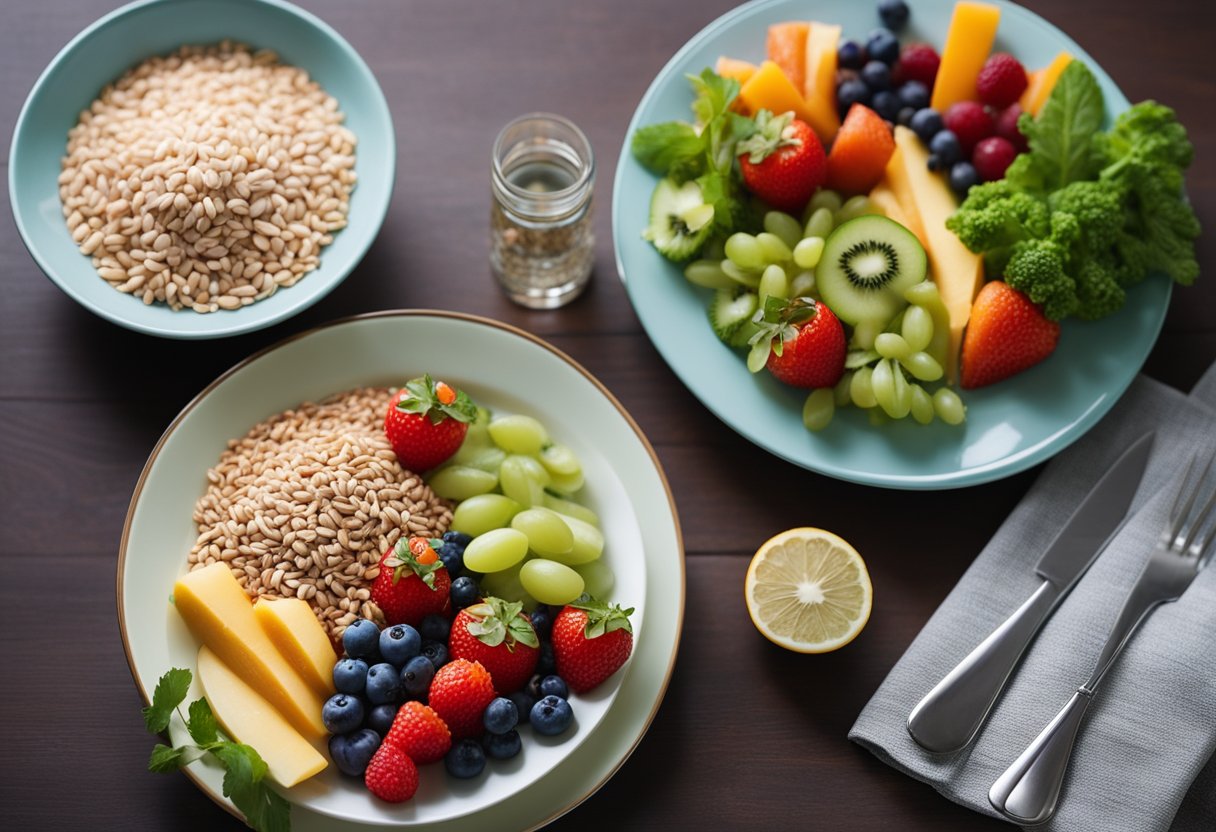
The DASH diet is not just about the food you eat. It also emphasizes lifestyle changes to improve overall health. Here are some important lifestyle considerations to keep in mind when following the DASH diet:
Physical Activity
Physical activity is an essential part of a healthy lifestyle. The DASH diet recommends engaging in moderate-intensity physical activity for at least 30 minutes per day, most days of the week. This can include activities such as brisk walking, cycling, or swimming. It is important to choose activities that you enjoy and that fit into your daily routine.
Weight Management
Maintaining a healthy weight is important for overall health and can help lower the risk of chronic diseases. The DASH diet emphasizes a balanced diet that is rich in fruits, vegetables, whole grains, and low-fat dairy products. It is also important to pay attention to portion sizes and limit high-calorie foods and beverages.
Alcohol and Caffeine
Moderate alcohol consumption may have some health benefits, but excessive alcohol intake can have negative effects on health. The DASH diet recommends limiting alcohol intake to no more than one drink per day for women and no more than two drinks per day for men.
Caffeine is a stimulant that is found in many beverages, including coffee, tea, and soda. While moderate caffeine intake is generally safe for most people, excessive caffeine intake can have negative effects on health. The DASH diet recommends limiting caffeine intake to no more than 400 milligrams per day, which is roughly equivalent to four cups of coffee.
In summary, the DASH diet is not just about the food you eat. It also emphasizes lifestyle changes to improve overall health. Physical activity, weight management, and limiting alcohol and caffeine intake are all important considerations when following the DASH diet.
Adapting the DASH Diet for Special Needs
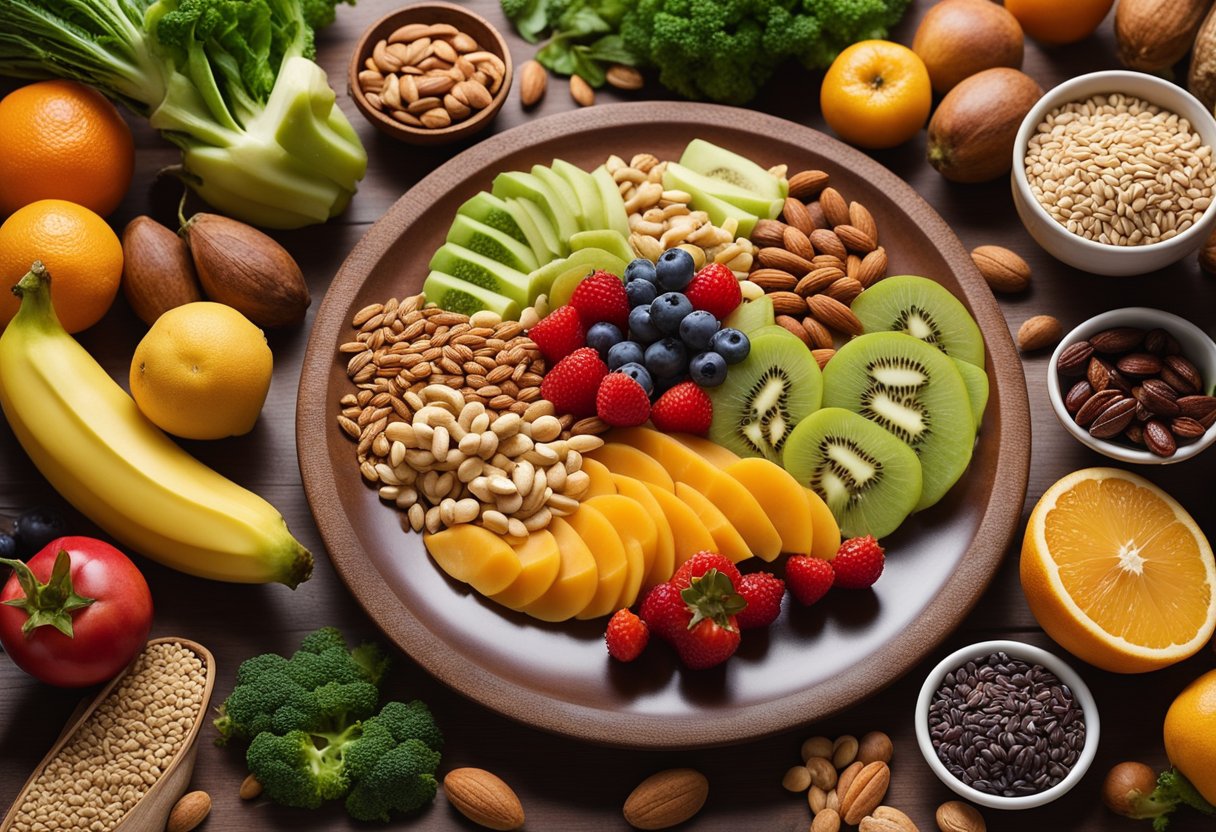
The DASH diet is a flexible eating plan that can be adapted to meet the needs of different individuals. Here are some tips for adapting the DASH diet to fit specific dietary needs.
Vegetarian and Vegan Adaptations
For those following a vegetarian or vegan diet, the DASH diet can be easily adapted. Instead of meat, individuals can consume plant-based protein sources such as beans, lentils, and tofu. Nuts and seeds can also provide a good source of protein and healthy fats. Vegetables and whole grains are already a big part of the DASH diet, making it easy for vegetarians and vegans to follow.
Gluten-Free Options
Individuals with celiac disease or gluten sensitivity can still follow the DASH diet with a few modifications. Gluten-free whole grains such as quinoa, brown rice, and buckwheat can replace wheat-based grains. It is important to read labels and avoid any products that contain gluten.
Age and Gender Considerations
The DASH diet can be adapted to meet the needs of different age groups and genders. For example, older adults may need to consume more calcium and vitamin D to maintain bone health. Women who are pregnant or breastfeeding may need to consume more calories and certain nutrients to support fetal and infant growth.
Mediterranean Diet
The Mediterranean diet is similar to the DASH diet in that it emphasizes whole foods such as fruits, vegetables, whole grains, and lean protein sources. Both diets also limit processed foods and added sugars. Individuals can incorporate Mediterranean-style dishes into their DASH diet to add variety and flavor.
In conclusion, the DASH diet is a flexible eating plan that can be adapted to meet the needs of different individuals. Vegetarians and vegans can easily follow the DASH diet by consuming plant-based protein sources. Gluten-free options are available for those with celiac disease or gluten sensitivity. Age and gender considerations should be taken into account when following the DASH diet. Finally, incorporating Mediterranean-style dishes into the DASH diet can add variety and flavor.
Challenges and Solutions
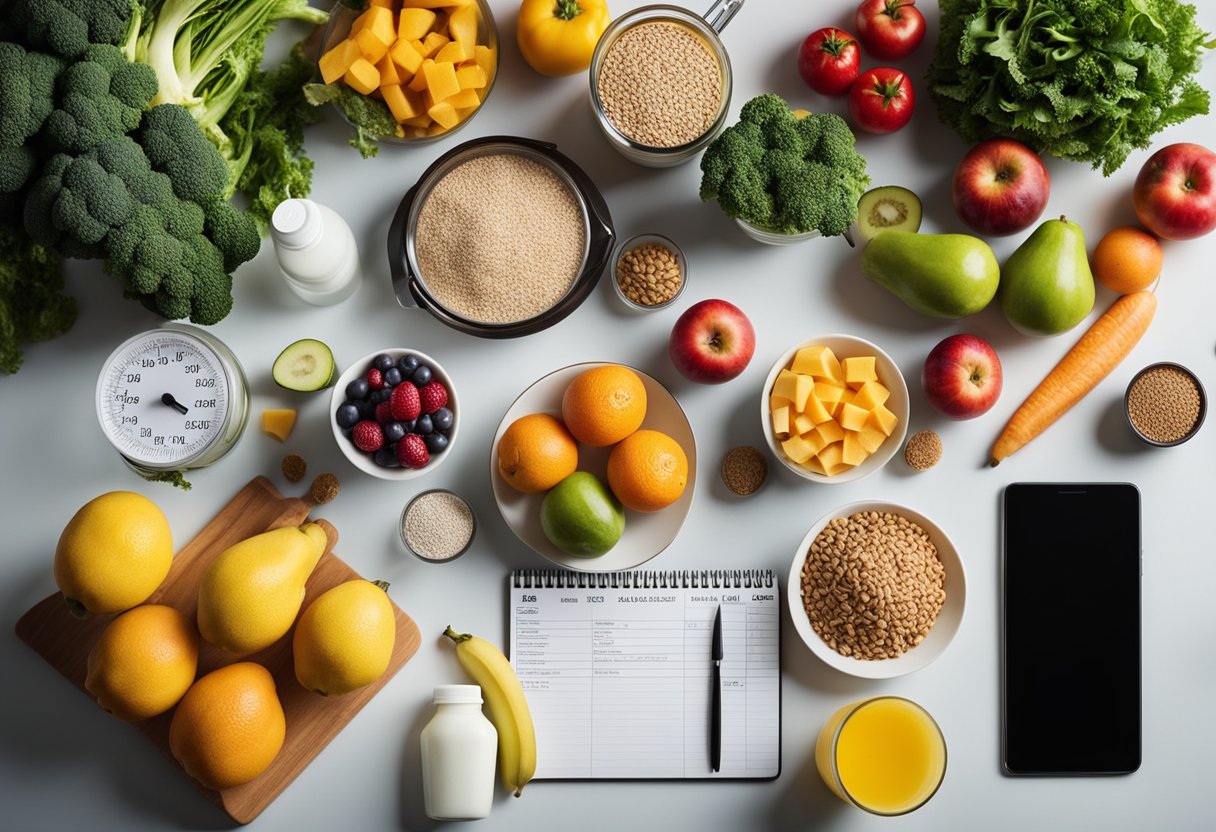
Eating Out
Eating out can be a challenge when following the DASH diet, as many restaurants serve high-sodium and high-fat foods. However, there are ways to make healthier choices when dining out. It is recommended to check the restaurant’s menu online before going out to eat. This will allow for planning ahead and choosing healthier options. When ordering, it is best to ask for dressings and sauces on the side to control the amount of sodium and fat consumed. Additionally, choosing grilled or baked options instead of fried can help reduce the intake of unhealthy fats.
Dealing with Cravings
Cravings for sweets and processed foods can be a challenge when following the DASH diet. However, there are healthier alternatives that can satisfy cravings. For example, fresh fruit can provide a sweet taste without the added sugar found in candy and other sweets. Additionally, whole-grain crackers or air-popped popcorn can be a healthier alternative to processed snacks. It is important to remember that cravings can be a sign of hunger, so it is important to eat regular meals and snacks throughout the day to avoid excessive cravings.
Budget-Friendly Tips
Following the DASH diet on a budget can be a challenge, but there are ways to make it more affordable. One way is to purchase fruits and vegetables that are in season, as they tend to be less expensive. Another way is to purchase frozen fruits and vegetables, which can be just as nutritious as fresh produce. It is also recommended to purchase whole grains in bulk, as they tend to be less expensive than packaged products. Additionally, preparing meals at home instead of eating out can help save money while also allowing for more control over the ingredients used.
Overall, following the DASH diet may present some challenges, but with planning and preparation, it is possible to make healthier choices and maintain a healthy diet. By making small changes and incorporating healthier alternatives, individuals can enjoy the benefits of the DASH diet without sacrificing taste or breaking the bank.
Monitoring Your Progress

As with any diet or lifestyle change, monitoring progress is crucial to achieving success. The DASH diet is no exception. Here are some key steps to take to track progress on the DASH diet:
Tracking Blood Pressure
One of the primary goals of the DASH diet is to lower blood pressure. Therefore, tracking blood pressure is a crucial step in monitoring progress. Blood pressure should be checked regularly, and any changes should be recorded. A healthcare provider can help interpret blood pressure readings and provide guidance on how to adjust the DASH diet to achieve optimal results.
Regular Health Check-Ups
In addition to tracking blood pressure, regular health check-ups are important for monitoring overall health and progress on the DASH diet. These check-ups can include measurements of LDL cholesterol, which should decrease on the DASH diet, as well as assessments for metabolic syndrome, a cluster of conditions that increase the risk of heart disease. Regular check-ups can also help identify any underlying health issues that may be impacting progress on the DASH diet.
Adjusting Goals Over Time
It is important to remember that progress on the DASH diet may take time, and goals may need to be adjusted over time. For example, if blood pressure is not decreasing as quickly as desired, a healthcare provider may recommend adjusting the DASH diet to include more low-sodium foods or increasing physical activity. It is important to work closely with a healthcare provider to ensure that goals are realistic and achievable.
By tracking blood pressure, scheduling regular health check-ups, and adjusting goals over time, individuals can monitor their progress on the DASH diet and achieve optimal heart health.
Frequently Asked Questions
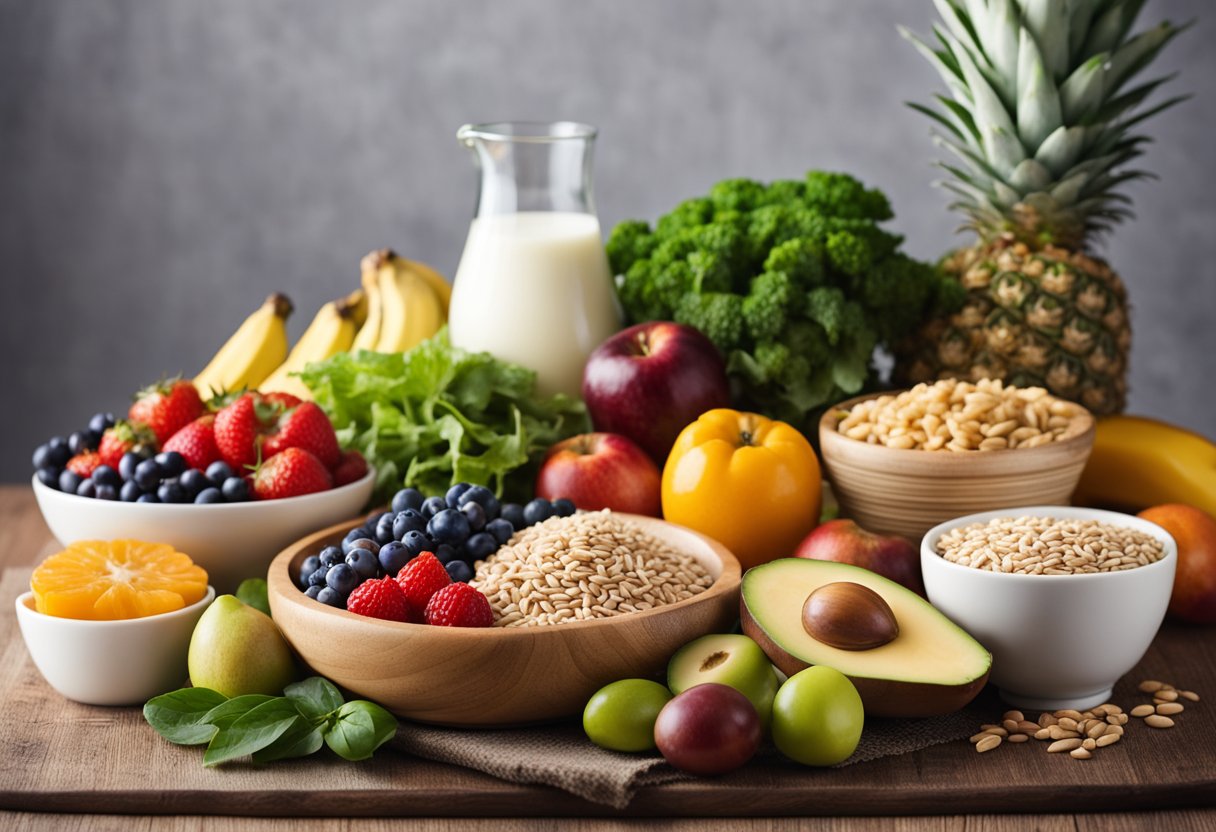
What foods are recommended for a high blood pressure diet?
The DASH diet emphasizes whole, nutrient-dense foods such as fruits, vegetables, whole grains, lean proteins, and low-fat dairy products. It also encourages limiting foods high in saturated and trans fats, added sugars, and sodium. By following these dietary guidelines, individuals may be able to lower their blood pressure and improve overall heart health.
How does the DASH diet aid in weight loss?
The DASH diet can aid in weight loss by promoting a calorie deficit through the inclusion of nutrient-dense, low-calorie foods. Additionally, the diet encourages healthy eating habits, such as portion control and limiting high-calorie, low-nutrient foods. However, it is important to note that weight loss is not the primary focus of the DASH diet and individuals should consult with a healthcare professional before starting any weight loss program.
Can eggs be included in a DASH diet meal plan?
Yes, eggs can be included in a DASH diet meal plan. However, it is recommended to limit egg yolks due to their high cholesterol content. Instead, individuals can opt for egg whites or egg substitutes.
What are the guidelines for starting a DASH diet?
The guidelines for starting a DASH diet include gradually increasing the intake of fruits, vegetables, and whole grains, while reducing the intake of high-fat, high-sugar, and high-sodium foods. It is also important to monitor portion sizes and limit alcohol intake. Individuals should consult with a healthcare professional before starting any new diet or exercise program.
Are potatoes considered suitable for someone following the DASH diet?
Yes, potatoes can be included in a DASH diet meal plan. However, it is recommended to choose baked or boiled potatoes and limit the amount of added butter or sour cream. Additionally, sweet potatoes are a nutrient-dense alternative to regular potatoes and can be included in the diet.
Where can I find a comprehensive grocery list for the DASH diet?
A comprehensive grocery list for the DASH diet can be found on various reputable websites, such as the National Heart, Lung, and Blood Institute or the American Heart Association. These lists typically include recommended foods, portion sizes, and serving suggestions.